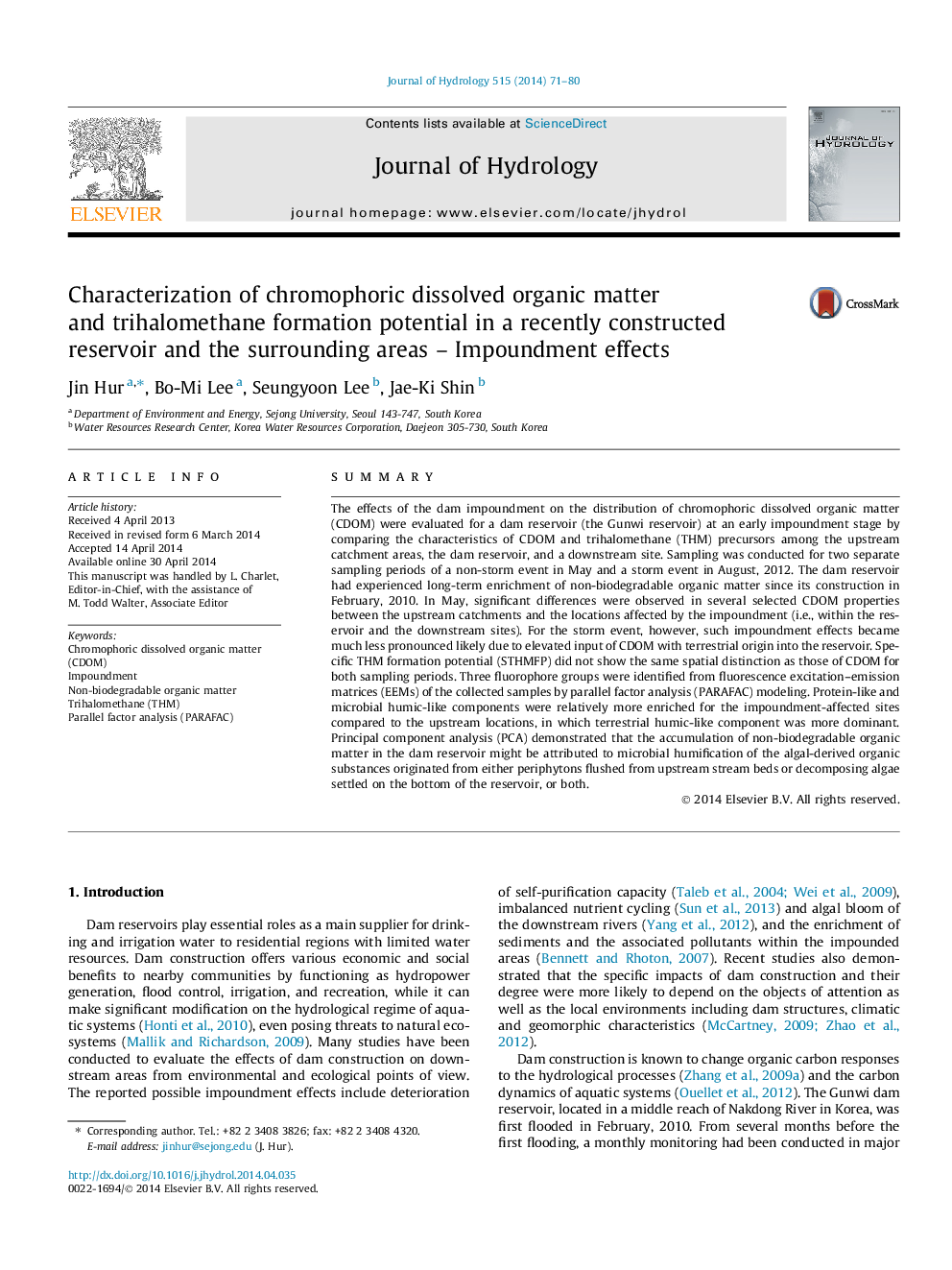| کد مقاله | کد نشریه | سال انتشار | مقاله انگلیسی | نسخه تمام متن |
|---|---|---|---|---|
| 6412827 | 1629933 | 2014 | 10 صفحه PDF | دانلود رایگان |

- Impoundment effects on CDOM and THMFP were evaluated for a recently constructed reservoir.
- Impoundment effects were more pronounced for a non-storm event than storm samples.
- Protein-like and microbial humic-like fluorophores were abundant for the impoundment-affected sites.
- Spatial variation in specific THMFP was smaller than those of CDOM properties.
- Microbial humification of algal DOM was likely responsible for the enrichment of non-biodegradable organic matter.
SummaryThe effects of the dam impoundment on the distribution of chromophoric dissolved organic matter (CDOM) were evaluated for a dam reservoir (the Gunwi reservoir) at an early impoundment stage by comparing the characteristics of CDOM and trihalomethane (THM) precursors among the upstream catchment areas, the dam reservoir, and a downstream site. Sampling was conducted for two separate sampling periods of a non-storm event in May and a storm event in August, 2012. The dam reservoir had experienced long-term enrichment of non-biodegradable organic matter since its construction in February, 2010. In May, significant differences were observed in several selected CDOM properties between the upstream catchments and the locations affected by the impoundment (i.e., within the reservoir and the downstream sites). For the storm event, however, such impoundment effects became much less pronounced likely due to elevated input of CDOM with terrestrial origin into the reservoir. Specific THM formation potential (STHMFP) did not show the same spatial distinction as those of CDOM for both sampling periods. Three fluorophore groups were identified from fluorescence excitation-emission matrices (EEMs) of the collected samples by parallel factor analysis (PARAFAC) modeling. Protein-like and microbial humic-like components were relatively more enriched for the impoundment-affected sites compared to the upstream locations, in which terrestrial humic-like component was more dominant. Principal component analysis (PCA) demonstrated that the accumulation of non-biodegradable organic matter in the dam reservoir might be attributed to microbial humification of the algal-derived organic substances originated from either periphytons flushed from upstream stream beds or decomposing algae settled on the bottom of the reservoir, or both.
Journal: Journal of Hydrology - Volume 515, 16 July 2014, Pages 71-80